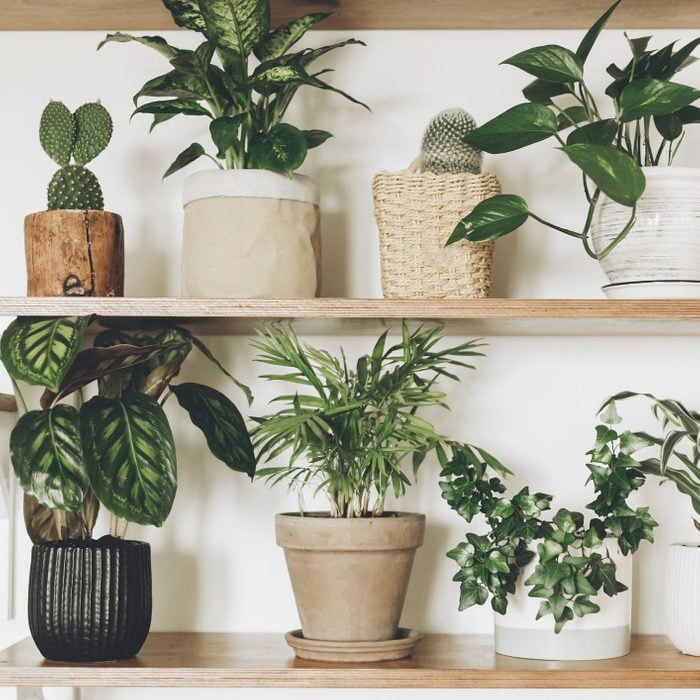
Don’t Have a Lot of Natural Light?
Then you’ll want to try one of these low-light indoor plants that need very little sunlight to grow beautifully in your home. Whether you have a dim corner that’s crying out for a pretty palm or you’re craving a colorful plant for your home office, these are among the best low-light indoor plants—and most are low-maintenance plants that anyone can grow, too.
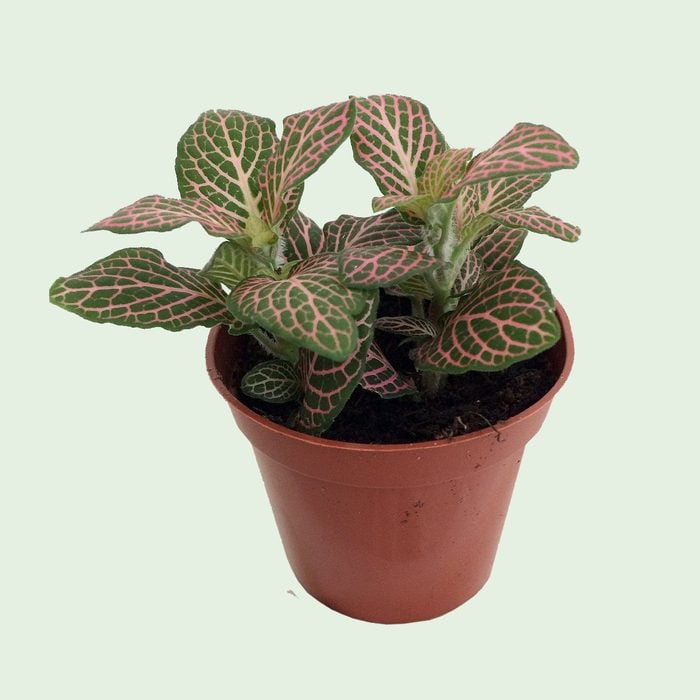
Nerve Plant (Fittonia spp.)
Fittonias, also known as nerve plants, are ideal for adding big color in a small space says, Justin Hancock, horticulturist for Costa Farms, as its green leaves are brightened with white, pink, or red veins. “While it tolerates low light, this tropical prefers moist soil and average to high humidity,” he says. “It quickly wilts when it gets too dry but recovers just as fast after. That makes it a good indicator plant to help you on top of watering your houseplants.”
Light exposure needs: low to medium light
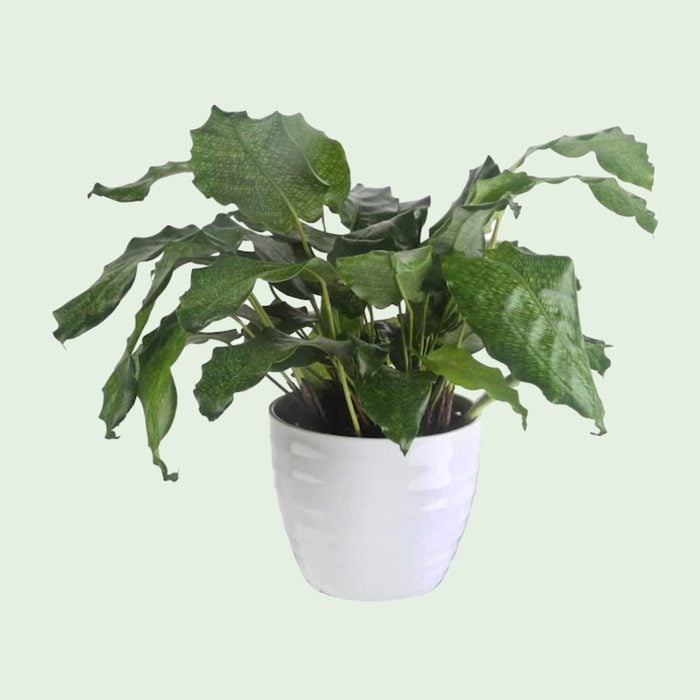
Calathea (Calathea spp.)
Looking for a trendy indoor plant with fancy leaves? “Calatheas offer a wide variety of leaf patterns, but they have a reputation for being fussy,” notes Hancock. For plant novices, he recommends a “network” European variety that features thick green leaves intricately veined in dark green. Calatheas are low-light indoor plants—in fact, their leaves will singe with direct sun exposure—that need good humidity to keep the leaves from turning brown.
Light exposure needs: low light
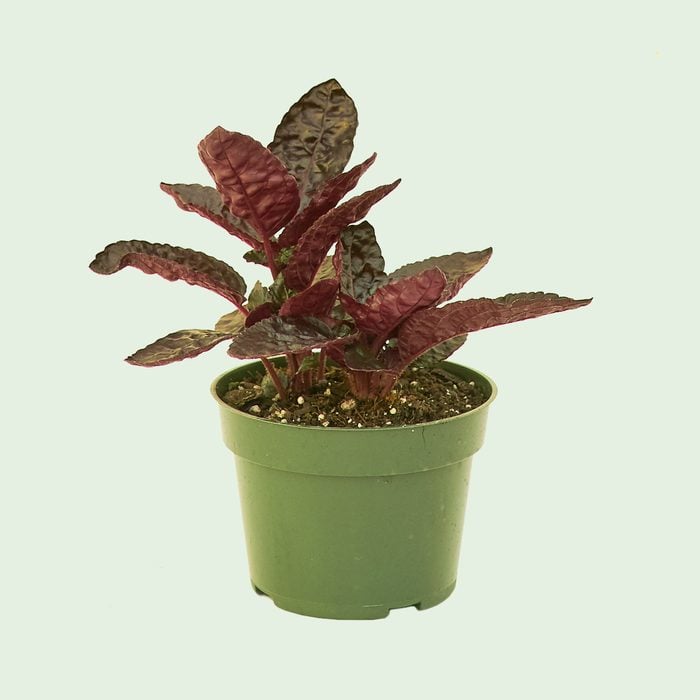
Purple Waffle Plant (Hemigraphis)
Called “a cute and charming tabletop plant,” by Hancock, the purple waffle plant does indeed have purple leaves with a decidedly waffle-like texture. It likes to stay moist, so don’t let the purple waffle plant dry out. This, and its small size, makes it a particularly nice choice for terrariums or as a plant for your bathroom. It is low maintenance, low growing, and happy in medium light. If it doesn’t get enough sunlight, its purple color may fade.
Light exposure needs: medium indirect light
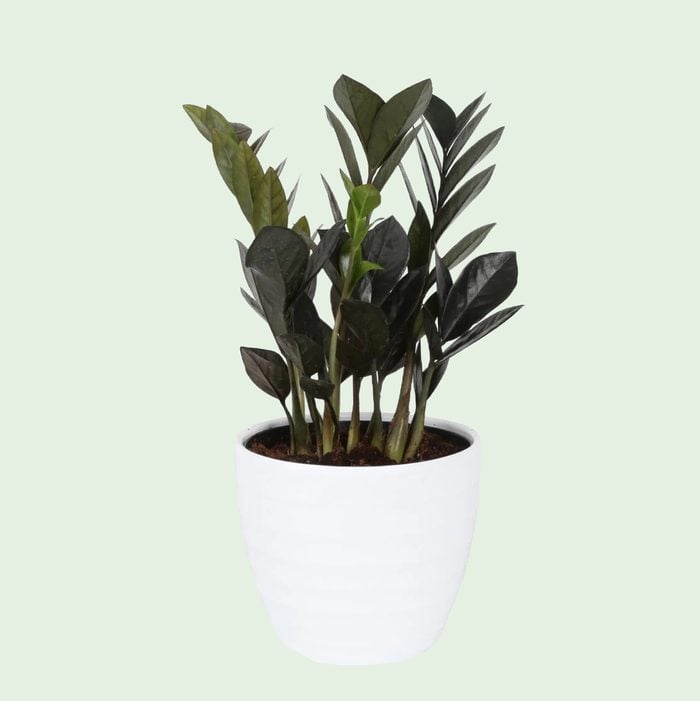
ZZ Plant (Zamioculcas zamiifolia)
“Among the most invincible houseplants, ZZ can go a month without water if it has to, thanks to its thick, tuberous roots,” Hancock says. “Look for Raven, a new variety that features foliage that starts out lime green and then matures to a stunning purple-black tone.” This plant, also called as Zanzibar gem, takes low to bright, indirect light and thrives in homes with average temperatures and humidity.
Light exposure needs: low to bright indirect light
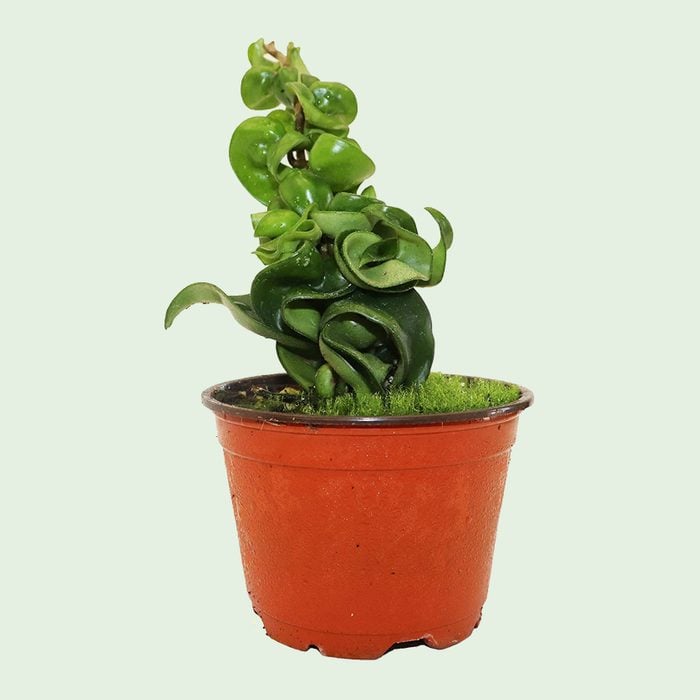
Hoya (Hoya carnosa)
Those with a brown thumb will be happy to hear that hoyas can tolerate low light and drought—so if you’re forgetful, they can survive weeks without water, Hancock says. They do need brighter, indirect light to bloom, “so if you want to enjoy their clusters of star-shaped, fragrant flowers, it’s best to grow them in a brighter window,” he says. If you don’t mind not having flowers, then low light isn’t a problem. Looking for something unique? Choose Hoya compacta, or rope plant that has crinkly leaves that curl and twist around the stem providing fabulous texture, Hancock says.
Light exposure needs: low to bright indirect light
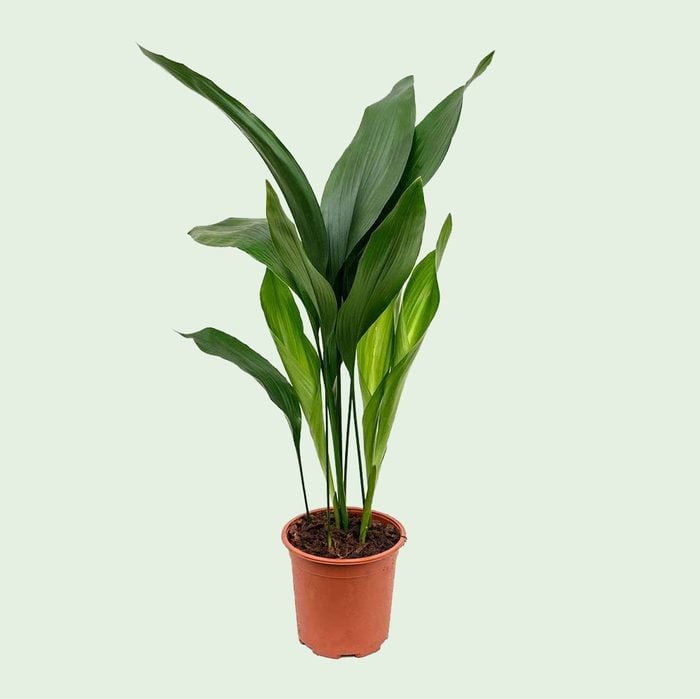
Cast Iron Plant (Aspidistra elatior)
The cast iron plant is as tough as its name sounds—it’s a resilient plant that tolerates heavy shade and even drought. The native of China and Japan has glossy, dark green leaves and can produce significant flowers, although it seldom blooms when kept as a houseplant; some varieties of these low-light indoor plants have variegated leaves. This lush plant can last for decades and is very tolerant to neglect, says Leilani Shannon, owner of Dutch Mill Florist in Bismarck, North Dakota.
Light exposure needs: low light
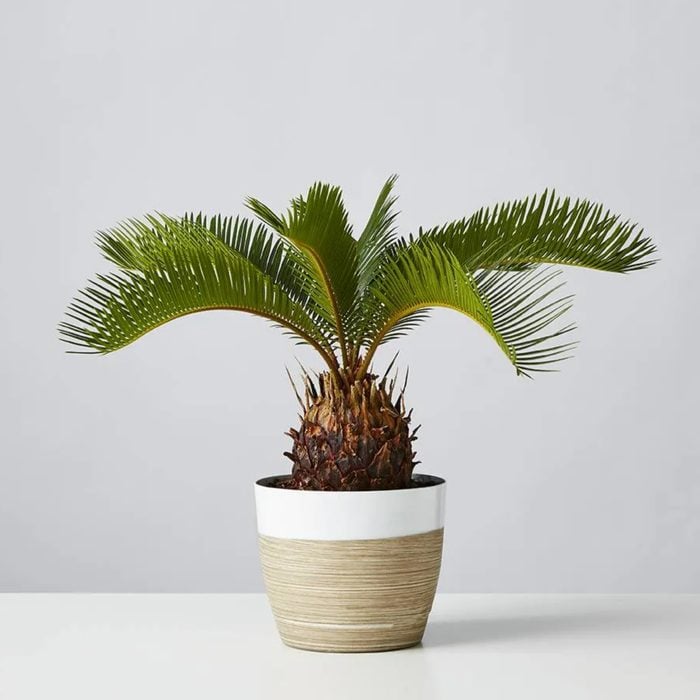
Sago Palm (Cycas revoluta)
This ancient tropical plant grows slowly, usually putting out just one palm frond each year, and the sago palm likes being pot-bound, so it’s an excellent choice for a low-light indoor plant for your home. The stiff, feathery leaves of sago palms add textural interest to almost any setting, as does the rugged-looking trunk. Its soil should be allowed to go dry, almost like a cactus, before it needs watering; it will thrive with a few hours of morning or afternoon sun but will tolerate low light.
Light exposure needs: low light
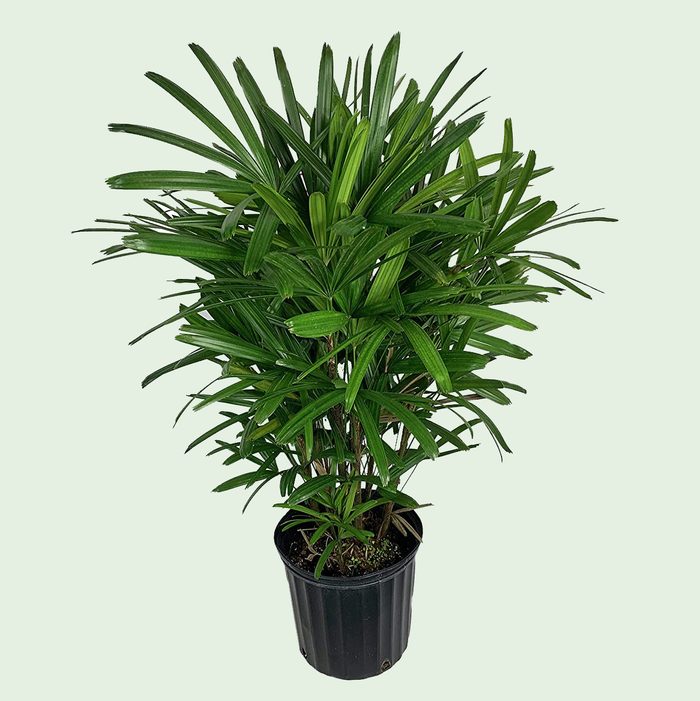
Lady Palm (Rhapis spp.)
Lady palms have what’s called palmate leaves—leaves that look like an open hand—along with stems that grow in clusters which gives them an attractive, full appearance. These slow-growing plants need filtered, indirect light, and large containers. Palms appreciate a summer vacation outside, so they can get additional sunlight, water, and humidity.
Light exposure needs: low indirect light
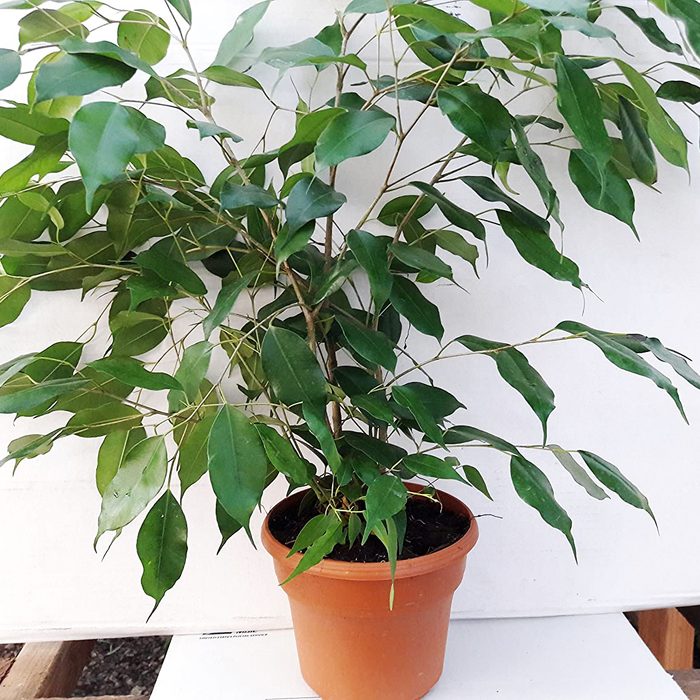
Weeping Fig (Ficus Benjamina)
Weeping figs have a reputation as being difficult to grow, and it’s true, they can be finicky, but their beauty makes them worth the effort. These tropicals from South Asia do best when grown in bright, indirect light; they need watering only when the top few inches of soil are dry. Its leaves often turn yellow and drop if it’s overwatered or experiences a sudden change in light levels or temperature (this can happen if you move it around or even when you bring it home from a nursery or greenhouse). These plants usually put out new leaves and recover in several weeks.
Light exposure needs: Low to bright indirect light
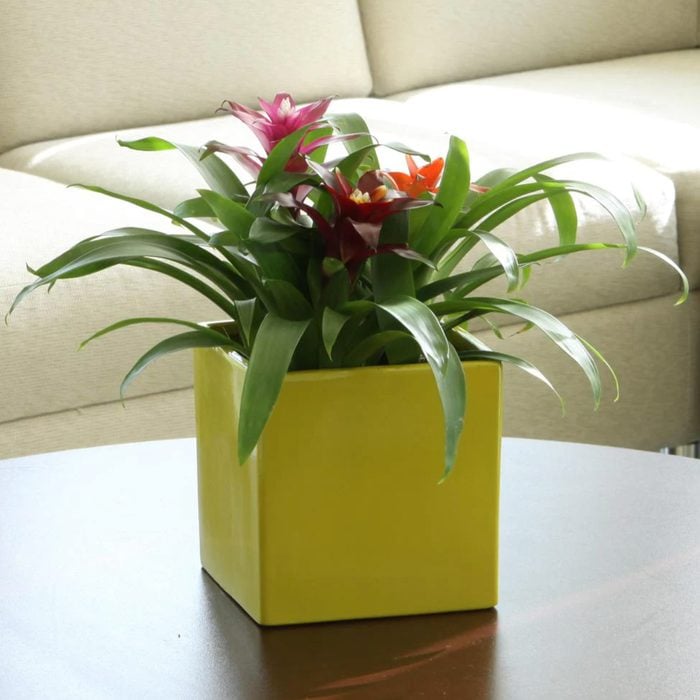
Bromeliad (Bromeliaceae)
With their exotic form and colors, bromeliads are a favorite low-light indoor plant. They tolerate low light but may lose some of their colors, so if their leaves start to become long, floppy, and mostly green, move them into a spot with brighter, indirect light. However, avoid putting them in a spot with afternoon sun, which can burn its leaves. Water bromeliads with distilled or rainwater by filling the cups in the centers of the plants as they can be sensitive to tap water. Dump out the water every ten days and refill the cups.
Light exposure needs: bright indirect light
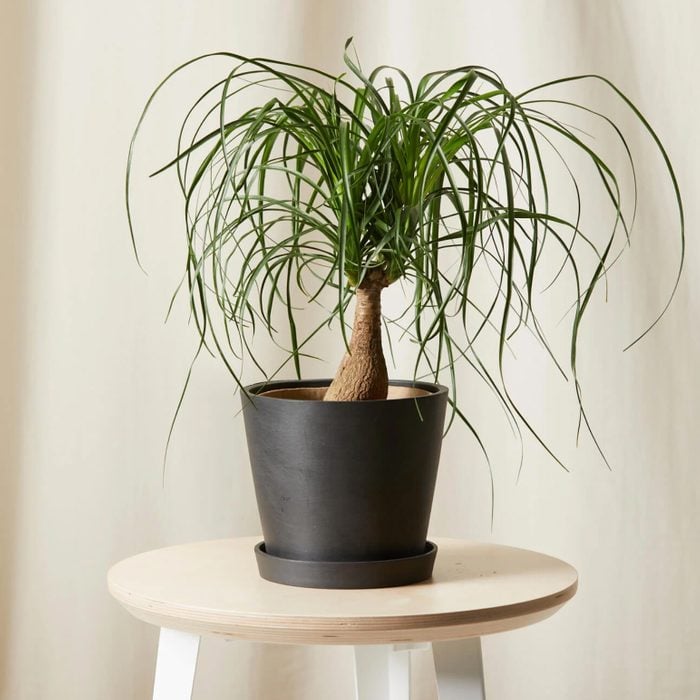
Ponytail Palm (Beaucarnea recurvata)
This plant is named for the appearance of the long leaves that grow from its “trunk,” and, as you might guess from their bulb-like trunks, ponytail palms are succulents—like their relatives, they’re perfect low-light indoor plants. Slow-growing and drought tolerant, these members of the Agave family—they’re not actually palms—are happy in bright, indirect light, and dry conditions; they need watering only every two to three weeks. If the leaf tips turn brown and crispy, just snip them off to refresh the plant’s good looks.
Light exposure needs: low to bright indirect light
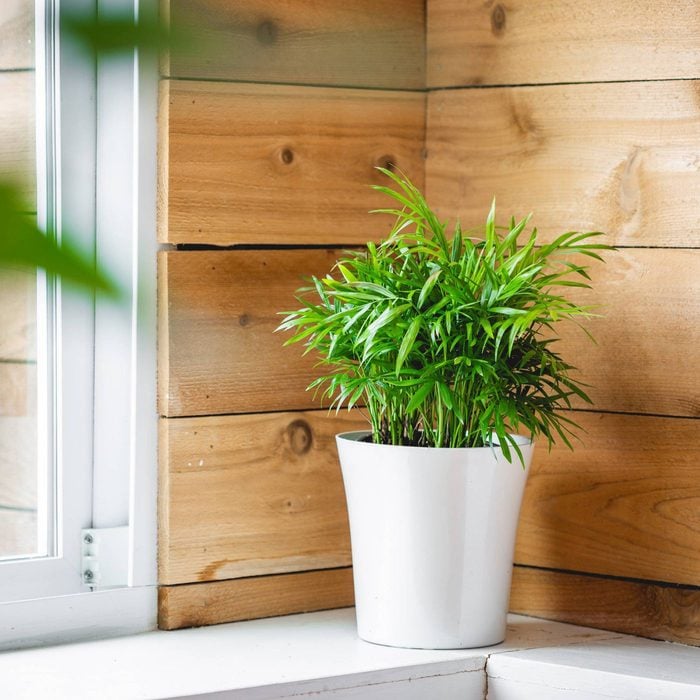
Parlor Palm (Chamaedorea elegans)
Graceful, easy to grow parlor palms aren’t just for the corners of dimly-lit rooms or on tabletops, bookshelves, or office desks although that’s often where you see them. While they like bright, indirect light, they also adapt to low light conditions. You may also see parlor palms marketed as Bella palms or Neanthe palms.
Light exposure needs: low to bright indirect light
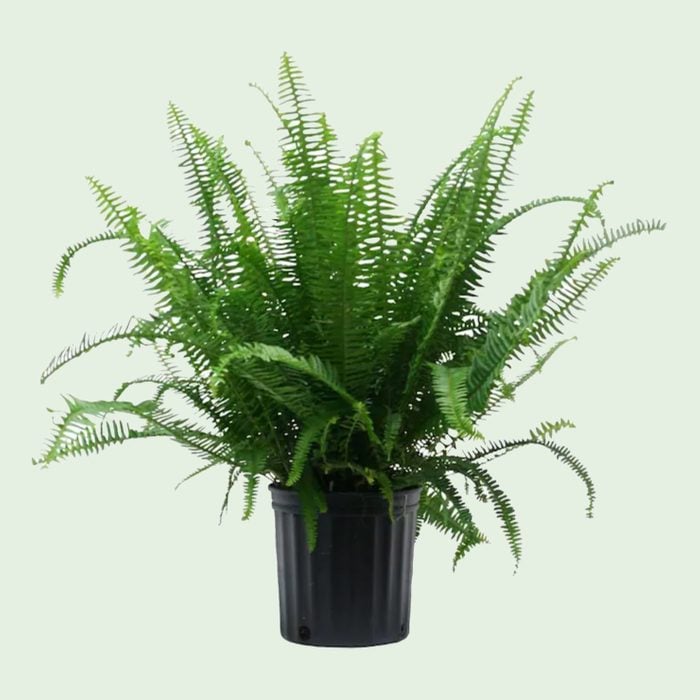
Kimberly Queen Fern (Nephrolepis cordifolia)
This easy-to-grow Australian native has lush, upright, dark green fronds. It needs medium, indirect light but also tolerates low light when grown as a houseplant. Water the fern when the potting soil is dry to the touch or when its fronds turn pale green. They’re also thought to be one of the plants that’s effective at purifying the air.
Light exposure needs: medium to bright indirect light
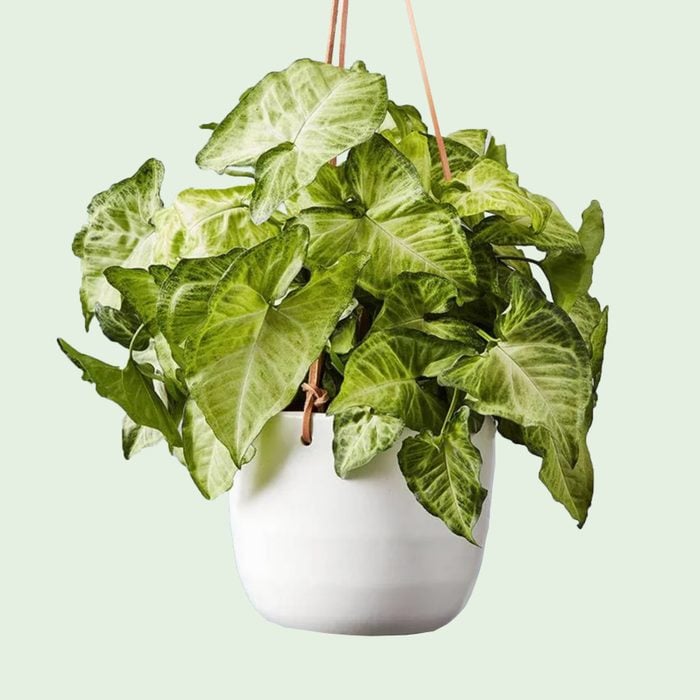
Arrowhead plant (Syngonium)
Syngonium or arrowhead plant, also known as Nephthytis, is an old-school houseplant that’s trendy again, says Hancock. Some varieties have a climbing or vining habit, but you can prune these low-light plants to keep them bushy. “Newer selections (such as the Allusion series) stay more compact,” he says. Different varieties show different variegation—the green leaves may be shaded with pink, cream, or white, he adds. The plants like to stay moist, but not soggy. “Arrowheads can be planted alone, but they love company,” shares Shannon and they do well when potted with other plants in a dish garden.
Light exposure needs: low to medium light
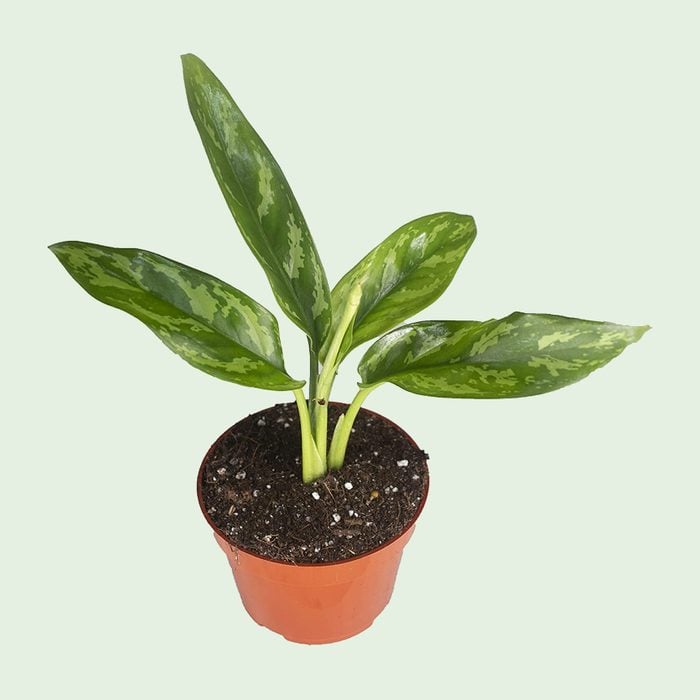
Chinese Evergreen (Aglaonema)
Chinese evergreens are popular low-light houseplants that come in many varieties. Said to bring good luck, these ornamental, low-light indoor plants have been grown in Asia for centuries. They require moist soil but not much else, though you will need to avoid cold temperatures and excessive sunlight. According to House Plants Expert, these ornamental, low-light indoor plants have been grown in Asia for centuries. Wear gloves if you have sensitive skin as the plant’s juice can cause irritation. “Silver Queen” is one of the most common types of Chinese evergreen and it’s is known for the striking pattern of its leaves.
Light exposure needs: low to medium indirect light
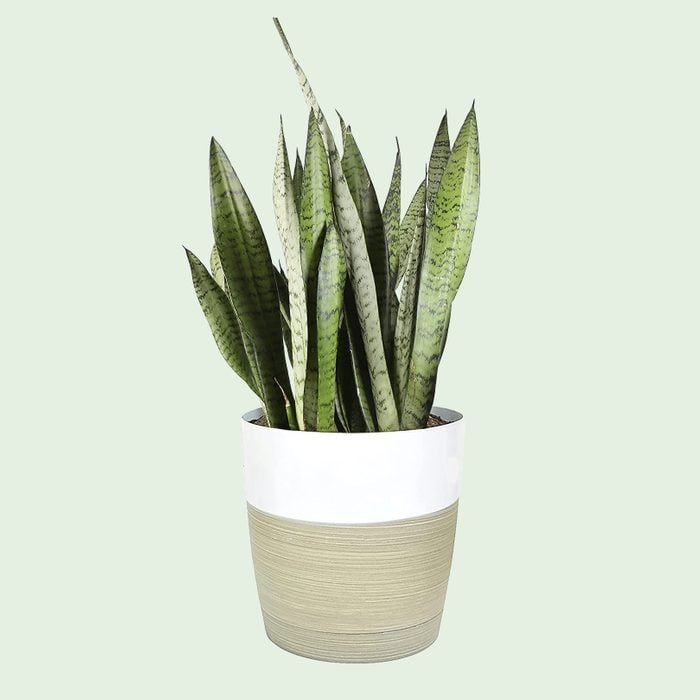
Snake Plant (Sansevieria trifasciata)
Almost impossible to kill, Sansevieria, also known as mother-in-law’s tongue or snake plant, is a tropical plant native to West Africa. This low-light houseplant has long, tall leaves with yellow or silvery-white stripes. Water it regularly during the growing season, and cut back significantly on watering during the fall and winter. This is low-maintenance plant needs protection from the hot afternoon sun and it tolerates some shade.
Light exposure needs: Low light or indirect sunlight
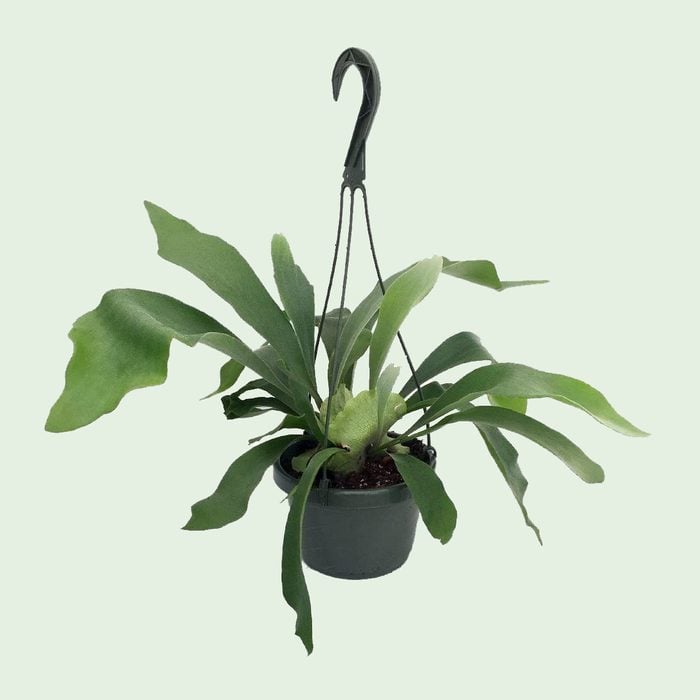
Staghorn Fern (Platycerium spp.)
One of the best low-light indoor plants, staghorn ferns grow high in rainforest trees in its native South America. Staghorn ferns do well as decorative hanging plants when given the strong, indirect light they’d get in the canopy. In the warmer months, water it once a week by submerging the brown part in water and then let it drain before putting it back in place. You can cut back on watering to keep the houseplant happy in the winter.
Light exposure needs: Bright indirect light
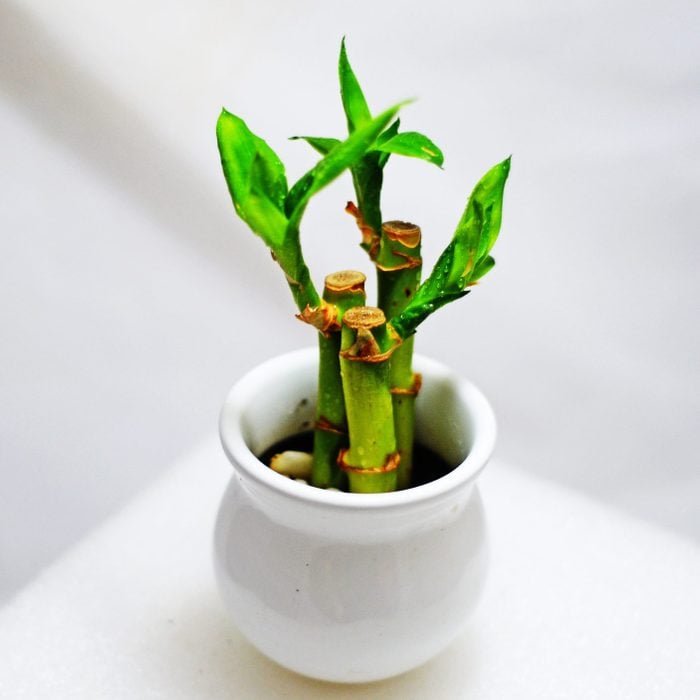
Lucky Bamboo (Dracaena sanderiana)
Dracaena sanderiana, often marketed as lucky bamboo, is known for its straight stalks and lush, green foliage. It’s one of the best low-light indoor plants, perfect for a desk or tabletop. Costa Farms says lucky bamboo is usually grown in water, with its stems anchored by pebbles or marbles. Look for stems trained into attractive twists, curls, or other shapes. Some say this low-light houseplant can help boost your feng shui.
Light exposure needs: low to medium indirect light
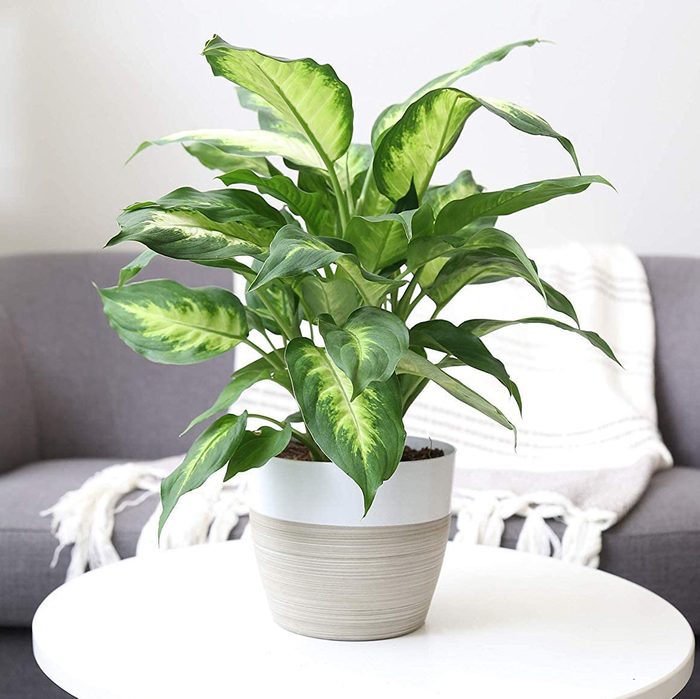
Dumb Cane (Dieffenbachia)
Also known as dumb cane, dieffenbachia is native to Mexico, the West Indies, and as far south as Argentina, the plants have straight stems and leaves with yellow, white, or cream markings. This low-light houseplant can take full shade, although it grows best in bright, indirect sun. Keep it consistently moist, but don’t let the soil stay soggy. Additionally, dumb canes are toxic plants for pets and young children because their sap can cause swelling of the mouth if chewed.
Light exposure needs: Full shade, low light, or bright indirect light
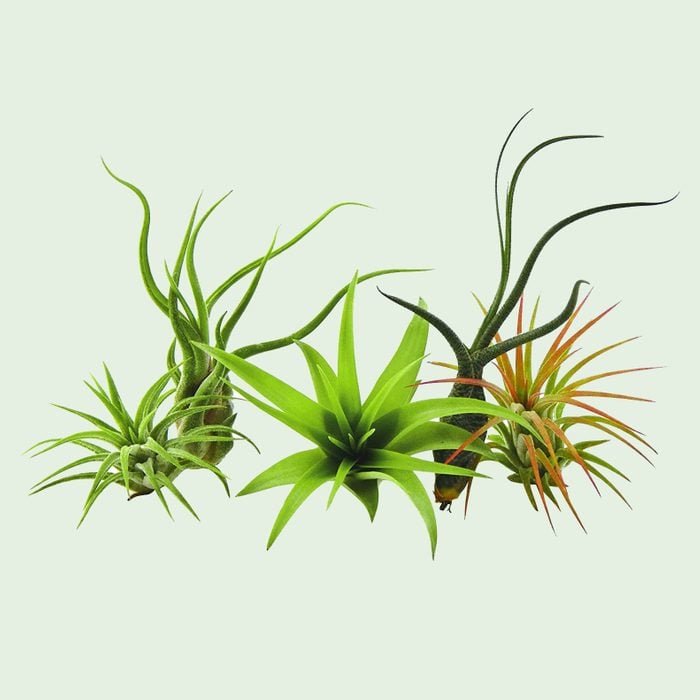
Air Plant (Tillandsia)
Air plants need bright, filtered sunshine and can grow without soil because they absorb nutrients from the air and water. In dry environments, mist them one to three times a week or soak them for about eight hours. Tillandsia is a genus of around 650 plant species, all native to forests, mountains, and deserts from northern Mexico, the southeastern United States, and the Caribbean to mid-Argentina. In nature, these plants cling to tree branches, bark, rocks, and other structures. They’re commonly seen mounted, placed inside seashells, or displayed in terrariums.
Light exposure needs: Bright indirect light
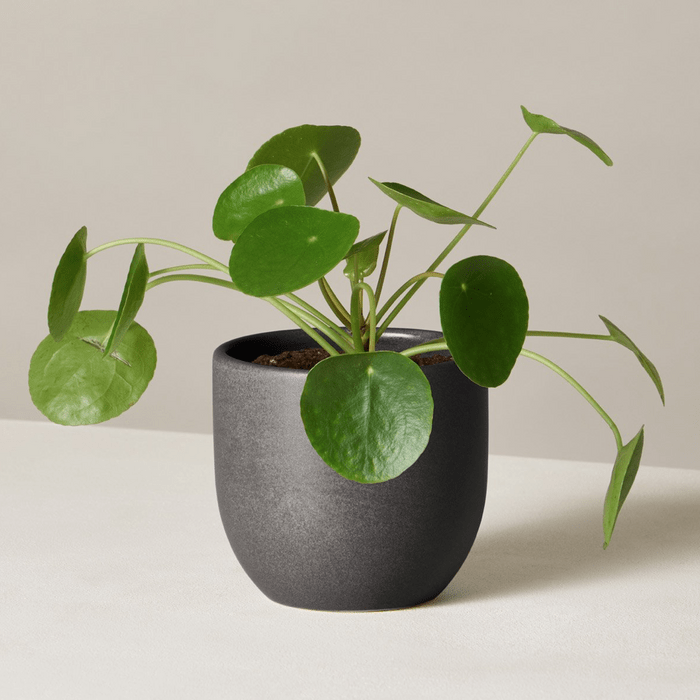
Friendship Plant (Pilea involucrata)
This pilea is also called the friendship plant because it’s so easy to propagate and share. Its leaves are velvety soft, oval-shaped, and dark green with pale green edges and touches of bronze and the underside of its leaves is dark red. It does best in a warm environment with high humidity and bright, indirect light; water it moderately. Pinch the stem tips to keep it bushy and compact.
Light exposure needs: Bright indirect light
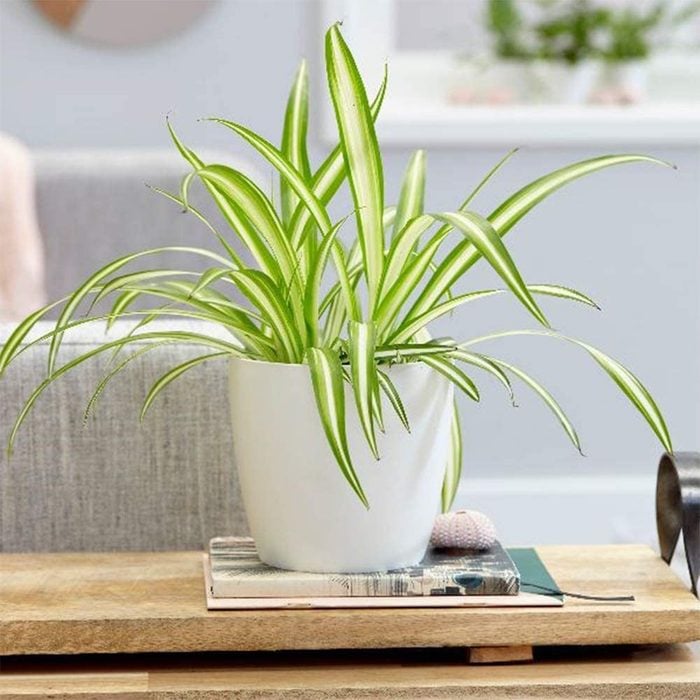
Spider Plant (Chlorophytum comosum)
Don’t let the name put you off: This is one of the most adaptable and low-maintenance houseplants that’s also known for being an air-purifying plant. Just keep your spider plant in well-drained soil, and repot this low light indoor plant in the spring if its roots grow through the drainage holes. Over time, a mature plant can produce a “spiderette” hanging down from the mother plant, like a baby spider on a web.
Light exposure needs: Bright indirect light
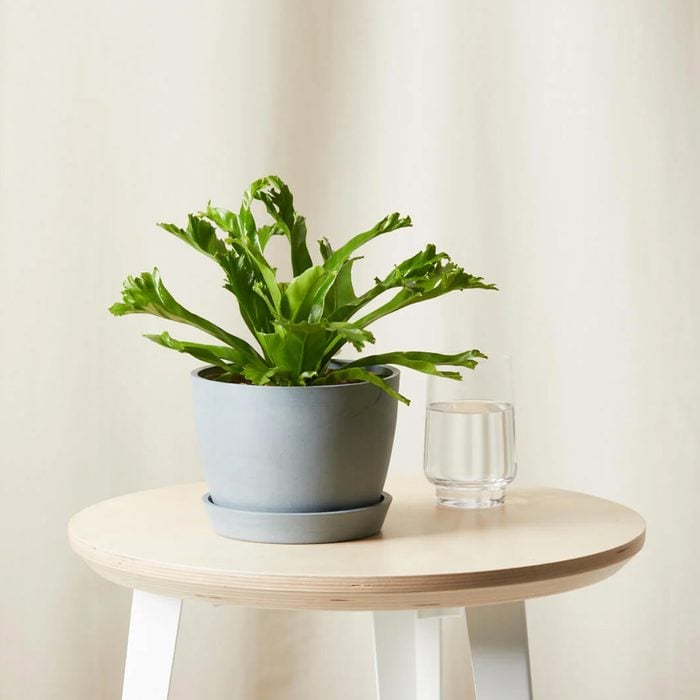
Bird’s Nest Fern (Asplenium nidus)
Asplenium nidus is commonly called bird’s nest fern because the tightly curled, new fronds that appear in the center look like small bird’s eggs. This lovely, low-light houseplant is known for its strap-shaped, apple-green foliage, which can be crinkled, wavy, or flat. When grown indoors, the ferns like warm temperatures, uniformly moist soil, and high humidity, such as in a bathroom or near a kitchen sink. Native to tropical rainforests, these low-light plants form vase-shaped rosettes.
Light exposure needs: Low to bright indirect light
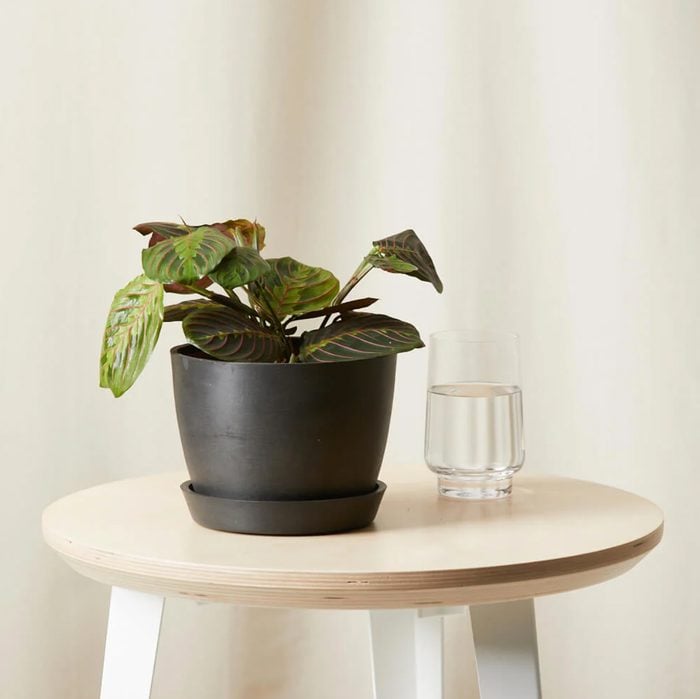
Prayer Plant (Maranta leuconeura)
Maranta leuconeura is tolerant of low-light conditions and actually prefers indirect sunlight. Its common name comes from the way the leaves close vertically in the evening, resembling praying hands. These low-light houseplants love humidity, so use a plant humidifier or mist them often and keep the soil evenly moist, but not wet or soggy. Native to Brazilian rainforests, they prefer a warm indoor location.
Light exposure needs: Low to bright indirect light
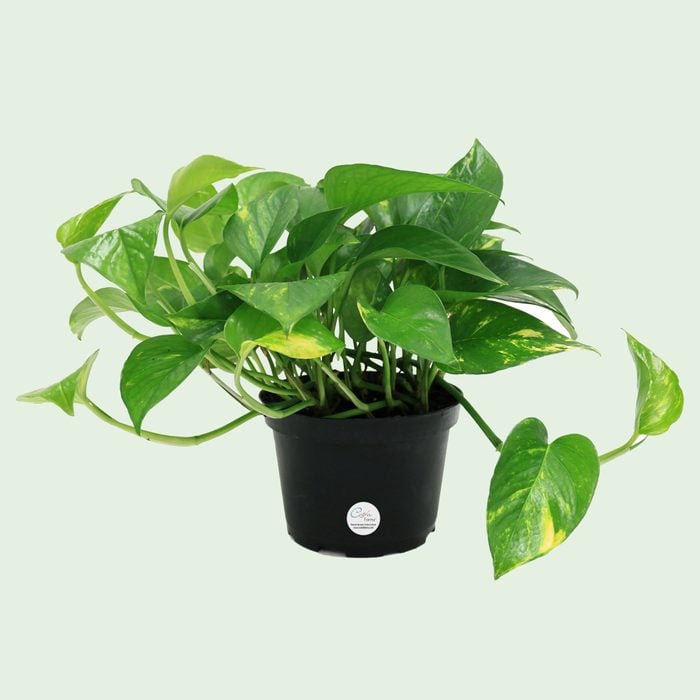
Golden Pothos (Epipremnum aureum)
Though this variegated, low-maintenance plant takes on brighter colors in medium to high light, the golden pathos will grow in low to medium—and it should always be from an indirect light source. You can let as much as half of the soil dry out before you water, then when you water, don’t let the soil stay soggy. This native of French Polynesia is mildly poisonous, so skip this one if you have young children or pets.
Light exposure needs: Low to medium bright indirect light
Sources:
- Justin Hancock, horticulturist at Costa Farms
- Leilani Shannon owner of Dutch Mill Florist in Bismarck, North Dakota